Even the best of us has a weakness. Be it an addiction, a behavior, or a handicap of some sort, sometimes that weakness can be debilitating. For Porsche’s diminutive 914, that weakness is rust. Corrosion is common in floor pans, battery tray, and front and rear trunks. If left to spread, it can render the car structurally compromised and dangerous. So, finding one with as little rust as possible is a huge undertaking. Believe it or not, a seller is getting rid of a 914 with a very rust-free body. This 1971 Porsche 914 for sale on eBay in Casper, California is in remarkable shape for a 914 and the bidding hasn’t reached the stratosphere with just two days to go. The high bid is just $2,150 at this writing. What do you think this one will top out when the hammer falls?
The Porsche 914 deserves a better reputation than the one it earned in the early seventies. This contentious joint project between Volkswagen and Porsche managed to produce a very advanced sports car for a comparably low price. The new design boasted strong unibody construction, a Targa top, an engine located in the middle, a five-speed transmission, and a very capable suspension. Considering that the best-selling sports car of the time was the MGB, it is hard not to appreciate the 914 for its sophistication. Porsche further worked its magic on a version that housed one of the company’s flat-six-cylinder engines. When given the proper horsepower and a competent driver, the 914 was a racetrack terror and a canyon carver of the first order on the street.
While the car was more than competent on the technical side, other factors made it far less successful than it could have been. The first and foremost was the design itself. A practical person could see that form followed function in a big way. It was a car comprised of mostly straight lines years before Giugiaro and his ItalDesign styling made that look popular. Customers were also disappointed with the four-cylinder version’s lack of horsepower. Cost-saving measures such as making the passenger seat fixed in its position, a vague shifter, and the engine’s pedestrian Volkswagen origins weren’t helpful either. Perhaps the most damning is that the car was marketed as a VW Porsche in Europe and as a Porsche in the United States. Most couldn’t get past the VW part then and a few still can’t today.
Production ran from 1970 through 1976. Porsche fixed a lot of the issues as the years wore on. By the time the last 914 came off the assembly line, the car was better in every way. It would be succeeded by the front engine 924, a car that would be shrouded in its own issues. The tragedy is that the moderately priced mid-engine Porsche evolution stopped right there. Enthusiasts of the 914 can see how continued development of the 914 in the same manner that the 911 enjoyed would have been preferential to just dropping the mid-engine car altogether. The return of the mid-engine Porsche in the form of the Boxter in 1996 proved that Porsche had the right idea after all. If only the 914 had the lines of the earlier 904…
When production ended on the 914, a funny thing happened. These vehicles developed kind of a cult following. With magazines such as VW, Porsche, and European Car and suppliers like Auto Atlanta feeding the faithful information and parts, many 914s were reborn as wide-bodied monsters. A common modification list consisted of Porsche 911 brakes and wheels, boxy fender flares that matched those on Porsche racing 914s, and transplanted Porsche flat-six engines. Those with less lofty aspirations drove, modified, and maintained more basic versions of these sports cars long after the last car was sold in a Porsche showroom. The scorn that some showed the car became at once a chip on the owner’s shoulders and a reason to press on.
Why the excitement decades later? 914s simply handle like a road-going go-cart. Nothing else is more responsive to a driver’s input. For those of us who have experienced a 914 and those who want to see if it lives up to the hype, this car sings a siren’s song. It is very hard to find a 914 that is rust-free. The unibody design is susceptible to the tin worm in several areas. Of course, the rust can be ruthlessly cut out and new panels are available if you want to go the full rotisserie restoration route. That takes time, expertise, and money that only the most dedicated would be interested in. Unless, of course, the car in question was one of the rare 914-6 models made from 1970 through 1972. Prices on the 914-6 have soared to the point that any survivor will end up being restored.
The seller tells us that this 914 is one of the nicest they have run across. It may even be wearing its original paint. While we can see that there is some surface rust, the body is free of anything that could be considered structural. Even better news is that there are no signs that the car has been cut on or wrecked in the past. The only questionable shot visible in the pictures is a small rectangular area in the front trunk. The picture shows something that looks like a small area that has been cut out, but the definition of the picture calls that into question. If there is a cut-out part, it can be patched in short order and with little evidence. It also looks like the fuel tank has been replaced by a fuel cell.
The car is in a partial state of disassembly at present. It does not run or drive, but the seller mentions being tempted to get it on the road before it sells. Under the middle hood is the original and somewhat anemic 1.7-liter Volkswagen flat four-cylinder engine. The original Bosch fuel injection is long gone, and a set of Weber carburetors has replaced the factory components. Replacing the fuel injection system with carburetors was a common modification when mechanics of the time ran into a balky fuel injection system. Sadly, the fuel injection systems on these cars are quite simple and reliable for the time. It was just that fuel injection was so uncommon that most mechanics took the easy way out and swapped in some carburetors.
If you are looking for a 914 to restore, then you would be hard-pressed to find a better body shell to start with. Likewise, if you are dead set on building the fire-breathing widebody 914 of your dreams, this is a great starting point for you as well. Even if you want to get a good one to sit on until you are ready to build your perfect 914, this may be your ticket. I hope this one gets built back into a great car. Stock or modified, people love 914s for a reason.
Have you ever driven or owned a 914? What would you do with this one? What do you think it will sell for? Please share your thoughts in the comments.

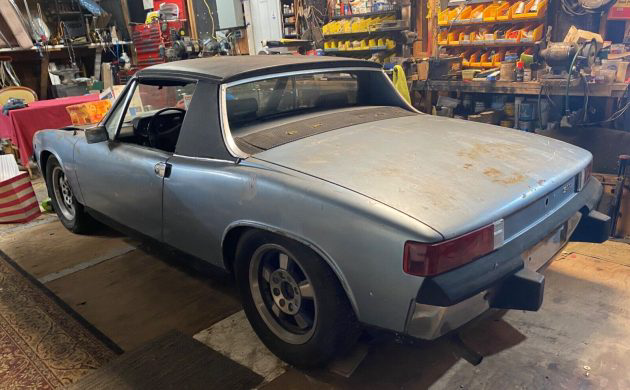

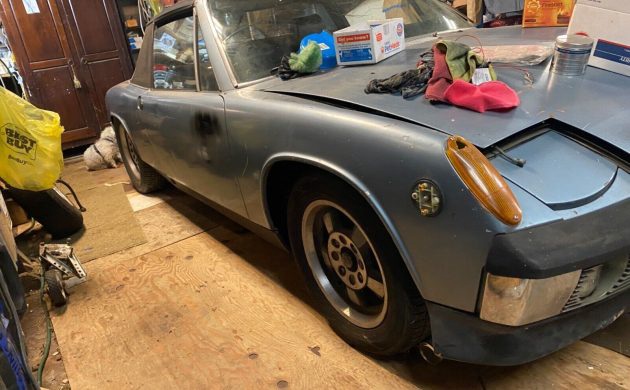
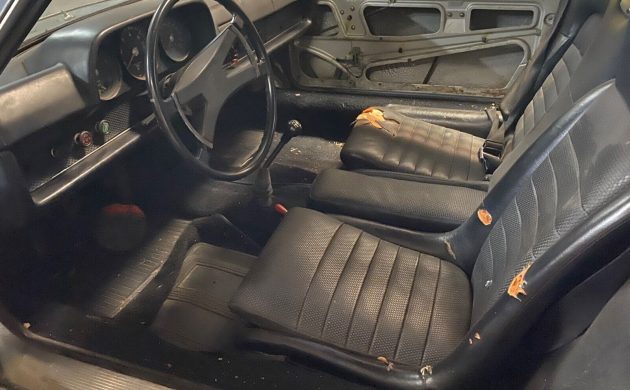
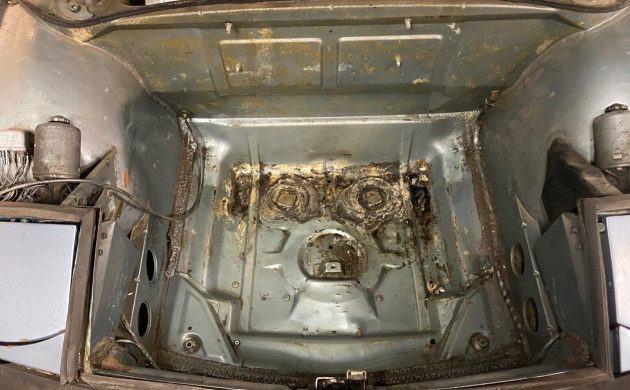

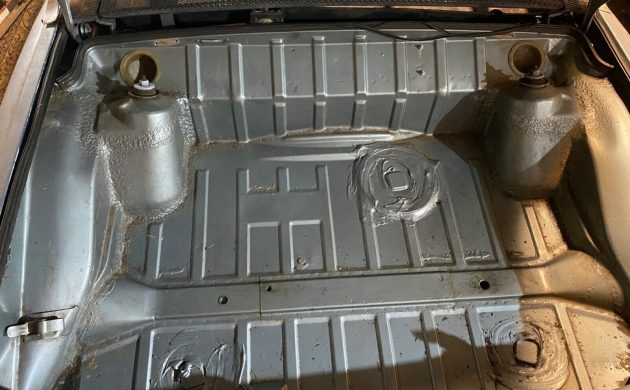

Nice write up Jeff. Owned two, first one the silver grey with black interior like this one but with AC, and an orange one that we did a complete bare body build on to make the best 914 that the factory didn’t. Looked at the new ones when they came out and didn’t like the looks of them so went out on the dealer’s lot and bought a silver 356C coupe. The first one, a ’72, was a go to work car so the 1.7 engine wasn’t a big deal. The second one, a ’74 with the 1,8, wound up with a 135 hp engine, strengthened suspension and AC was a totally different car. It now has a 3 ltr 911 6 in it with it’s new owner.
Beautiful car Bob, love that orange paint and the way you did it ……..Porsche should have made them that way …….
Are they sure it’s a ’71? It has ’73/’74 bumpers on it.
Serial number say it’s a ’71 and it does have the non adjustable passenger seat. Maybe they swiped bumpers from a ’74?
Some of the cars came with black painted bumpers. Could be owner wanted chrome instead and raided a wrecking yard.
Hit in the front at some point?? May not be rusty but seems to have had a hard life.
We test drove a new 2.0 5-speed in 1974. Zingy, fun little car – but it would have been the wife’s daily and I couldn’t sell her on it because of the lack of interior/trunk space. That, and, the test drive being on a Sunday… she ended up spinning the 914 on a wet parking lot, which did nothing to further endear it to her. We ended up with an Olds Omega S automatic. Surprisingly quick car with its cold-air equipped 350.
Hey “Square,” I drove a 914 2.0 in 1974 as well and remember being quite impressed, especially with the handling. Had a college friend who came into some money and, on my recommendation to check out a Porsche, bought a 914-6 off the dealer’s pre-owned lot. Wow what a car that was!!
My dad bought one in 1974, a 1975. When it worked, it was heaven. We never drove it in the winter, we had the rustproofing, etc.
The issue was “when it worked”.
Fast forward to about 2012, the car was finally reliable, but kept overheating.
I dropped the engine in my garage, thinking that maybe something had gotten sucked into the ductwork, and was blocking the flow of air.
I figured out that what happened was that the oil temp sending unit was leaking, and allowed oil to collect on top of the the cooler. All of the dust and debris that was being blown in the ductwork caught on top of the cooler, and formed a layer of what looked like felt on top of the cooler.
That being said, once the engine was removed, we could clearly see the infamous 914 “Hell Hole”. The rust ran like a laser through the unibody, and along the back half of the passenger side floor pan.
Remember, this is a car with 40,000.00 miles on it since new, that was never driven in the winter, garage stored virtually its entire life, rustrpoofed. And yet, still had the hell hole.
At that point, it was too much for me, and sadly, we had to let it go.
God, I loved that car…
Hell hole started the first time water got on the battery during a rain storm or just washing the car. I moved the batteries up front on both cars to stop any chance of getting rust in the area
These always caught on fire. No idea why. I have personally seen three of them burning on the side of the highway.
Rubber fuel lines all over the engines, FI or carbs, that if ignored get you old, cracked lines, loose clamps etc. and eventually fire.
When the 914 first appeared, Bob Holbert took me for a test drive, but I didn’t go for it. Eventually I owned a ’73 2-liter and had a lot of fun autocrossing and on tracks. The 914 just needed another round of factory development, but the Boxster is definitely its descendant.
They caught fire because the battery (in the hot engine compartment) could leak onto fuel lines, etc. The trick was to move the battery into the front trunk and replace the lines with better hoses. Moving the fuel pump up front prevented vapor lock.
There’s been a steadily-growing re-appreciation of the 914 lately. Looks like this guy started to build a faster street car. Don’t know why you’d replace the fuel tank with anything but a fuel cell. Maybe the trunk-floor surgery was for an oil cooler; it wouldn’t stop me from buying it. The most effective thing to do here would be to build a large-displacement Type 4 engine; installing a 911 engine would be much more expensive. This will make someone very good project.
I never actually drove one, but the parent of a group home I was living in as a kid bought a new one. So, I did get plenty of rides in his 1972 914. I thought it handled great from a passenger’s point of view